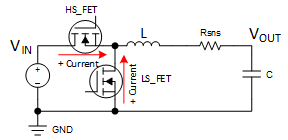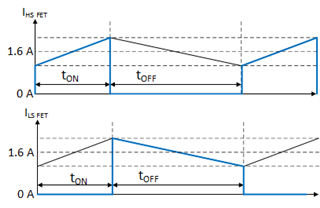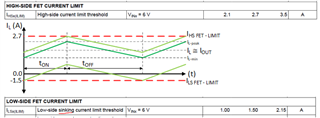The Low-side sinking current limit threshold in TPS92520 is typical 1.5A. When ILS is over 1.5A, fault will be triggered.
As Buck converter, the low-side switch conduct the current when high-side switch turn off. If 1.5A(average) is required for the output current, that means the low-side switch will also conduct 1.5A, and this will trigger the threshold.
Are my understanding correct?
If yes, it is not possible to output 1.6A. But why datasheet mentions that the output current capability could go up to 1.6A?
Thanks.
-
Ask a related question
What is a related question?A related question is a question created from another question. When the related question is created, it will be automatically linked to the original question.





